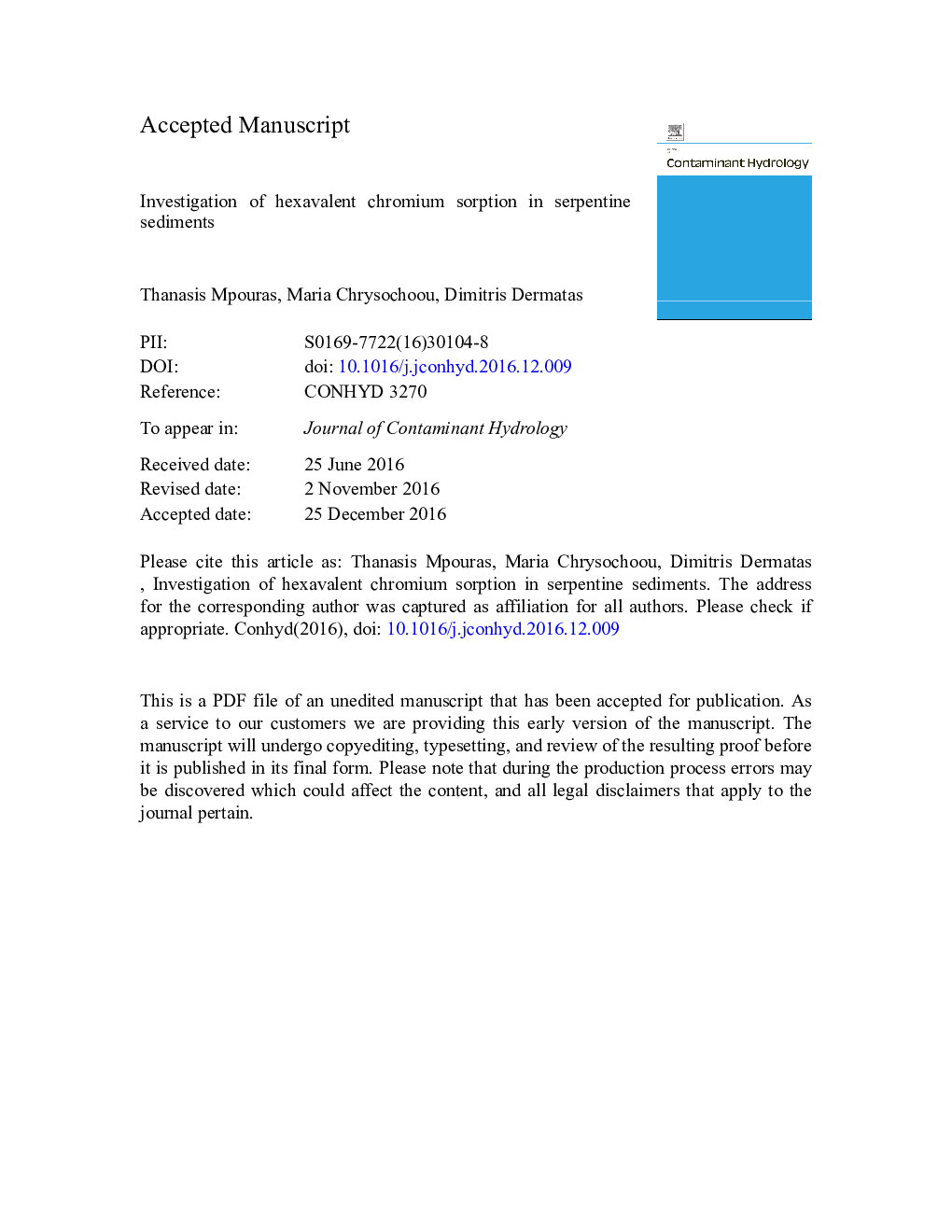| Article ID | Journal | Published Year | Pages | File Type |
|---|---|---|---|---|
| 5765905 | Journal of Contaminant Hydrology | 2017 | 29 Pages |
Abstract
In this study the removal of hexavalent chromium (Cr6 +) by serpentine sediments was investigated in order to delineate Cr6 + sorption behavior in aquifers with ultramafic geologic background. Batch experiments were conducted in order to determine the influence of several parameters on Cr6 + removal, including the pH of the sediment solution, mineralogy, sediment's particle size and Cr6 + initial concentration. The results showed that Cr6 + removal was due to both adsorption and reduction phenomena. Reduction was attributed to the presence of a magnetic fraction in the sediment, mostly related to magnetite, which contributed almost 50% of the total removal in the pH range 3-7. Adsorption behavior was dominated by the finer sediment fraction (d < 0.075 mm). The amount of Cr6 + adsorbed was constant in the pH range 3-7, while it decreased sharply in the range 7-8.5. Cr6 + adsorption was found to increase and decrease proportionally with increasing initial Cr6 + concentration of and particle size, respectively. The linear Langmuir and Freundlich adsorption isotherms were used to describe the experimental data, with Freundlich providing a better fit to determine distribution factors for transport modeling.
Keywords
Related Topics
Physical Sciences and Engineering
Earth and Planetary Sciences
Earth-Surface Processes
Authors
Thanasis Mpouras, Maria Chrysochoou, Dimitris Dermatas,
